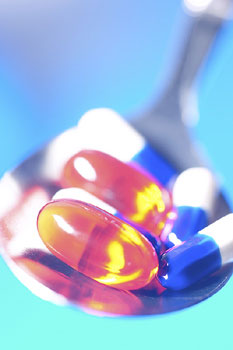The top 10% of newly marketed drugs account for half of pharmaceutical industry's net returns - Drug Cost Studies in Brief - Brief Article
 The top 10% of newly marketed drugs account for half of pharmaceutical industry's net returns. And only one-third of new drugs generate earnings that exceed average R&D costs. These findings are from a report published in a supplement to the journal PharmacoEconomics last month and presented at a conference hosted by the Tufts Center for the Study of Drug Development. Study authors say the average rate of return for 118 new drugs introduced from 1990 to 1994 was 11.5%, while the real cost of capital during this time period was 11%. Since the 1970s, rapid growth in R&D spending has resulted in introduction of new therapeutic classes and blockbuster compounds. But this does not mean that more spending will result in proportionately more new products. It now costs $802 million to bring a new drug to market, according to the Tufts Center. This cost is cited as a major factor in the high prices of new drugs. The study authors conclude that there are several specific steps that can be taken to reduce that cost. The supplement is available from the Tufts Center for the Study of Drug Development The top 10% of newly marketed drugs account for half of pharmaceutical industry's net returns. And only one-third of new drugs generate earnings that exceed average R&D costs. These findings are from a report published in a supplement to the journal PharmacoEconomics last month and presented at a conference hosted by the Tufts Center for the Study of Drug Development. Study authors say the average rate of return for 118 new drugs introduced from 1990 to 1994 was 11.5%, while the real cost of capital during this time period was 11%. Since the 1970s, rapid growth in R&D spending has resulted in introduction of new therapeutic classes and blockbuster compounds. But this does not mean that more spending will result in proportionately more new products. It now costs $802 million to bring a new drug to market, according to the Tufts Center. This cost is cited as a major factor in the high prices of new drugs. The study authors conclude that there are several specific steps that can be taken to reduce that cost. The supplement is available from the Tufts Center for the Study of Drug Development
|

 The top 10% of newly marketed drugs account for half of pharmaceutical industry's net returns. And only one-third of new drugs generate earnings that exceed average R&D costs. These findings are from a report published in a supplement to the journal PharmacoEconomics last month and presented at a conference hosted by the Tufts Center for the Study of Drug Development. Study authors say the average rate of return for 118 new drugs introduced from 1990 to 1994 was 11.5%, while the real cost of capital during this time period was 11%. Since the 1970s, rapid growth in R&D spending has resulted in introduction of new therapeutic classes and blockbuster compounds. But this does not mean that more spending will result in proportionately more new products. It now costs $802 million to bring a new drug to market, according to the Tufts Center. This cost is cited as a major factor in the high prices of new drugs. The study authors conclude that there are several specific steps that can be taken to reduce that cost. The supplement is available from the Tufts Center for the Study of Drug Development
The top 10% of newly marketed drugs account for half of pharmaceutical industry's net returns. And only one-third of new drugs generate earnings that exceed average R&D costs. These findings are from a report published in a supplement to the journal PharmacoEconomics last month and presented at a conference hosted by the Tufts Center for the Study of Drug Development. Study authors say the average rate of return for 118 new drugs introduced from 1990 to 1994 was 11.5%, while the real cost of capital during this time period was 11%. Since the 1970s, rapid growth in R&D spending has resulted in introduction of new therapeutic classes and blockbuster compounds. But this does not mean that more spending will result in proportionately more new products. It now costs $802 million to bring a new drug to market, according to the Tufts Center. This cost is cited as a major factor in the high prices of new drugs. The study authors conclude that there are several specific steps that can be taken to reduce that cost. The supplement is available from the Tufts Center for the Study of Drug Development